A few days ago, upon entering Ivan Gallery, I felt an acute satisfaction, a visceral interest that I very much associate with an erotic impulse rather than the disinterested contemplation from old Kant’s recipe book. The next day I pondered: was it the Dionysian atmosphere from the exhibition opening or was it the pleasant tension of the after-chats? I remembered that it all started with Ross Taylor’s text. And right when I was about to attempt the usual fugitive gaze. I tried it a few times, but to no avail. I figured I wasn’t faced with your usual concept, but with the kind of text that you either read it for real or you throw it in the nearest trash bin to get rid of it.
It was basically about a studio inhabited by a weird, the kind of deviant character, the half-man-half-rat from Dostoievsky’s underground, Leos Carax’s Monsieur Merde’s counterpart. A mixture of monster and demented artist, ready to bite off the fingers of anyone who attempts to classify his art in terms of style or content.
In this sense, the key work without which the reading of this exhibition wouldn’t have made it far I’d wager is not the neon Jesus painting nor the picture of the grinning cat that’s urging you to reread Alice in Wonderland (or at least spend some time on the computer with the virtual version), but the beanbag from the upstairs room, a textile object showered in paint, solvents and coffee of which Ross Taylor admits that it comes from the remains of his own studio. Acting beyond the old metaphorical plain, this sponge soaked in color and sweat is directly acting, just like an obscene word whose violence stems form its very utterance, on repeat in the darkness. It does not represent anything, it has nothing to do with semantics, it just is, suggesting to the public that it is best to be silent when facing a direct manifestation of the studio in the gallery space.
In the downstairs room a pair of objects shaped like baptismal fonts reiterate the same instrumental, ritualistic function. They are assembled with various found objects and pieces from other works, it seems as if they too have inhabited the studio, at first in a discreet corner, as simple vessels for collecting rain water. It suddenly caught the artist’s eye when it crossed his mind that the process with which the improvised fonts settles the rain doubly reflects the manner in which his painting filters the studio’s atmosphere and all the daily habits. From this one can gather that the downstairs room offers a sum of gazes. Amongst them there’s the blue Dirty glass, dirty gloss delivering the POV of a forgotten glass of water.
It becomes increasingly clear that Ross Taylor’s project is built in Battaile’s order, a species of base materialism devoid ontology, without a trace of idealism, a celebrated debauchery of matter above concepts or abstractions. In this territory, far from any anthropocentrism, only poetry beyond words can survive, only the very rhythm. It is the territory for ultimate sincerity, for nude performativity, for the turning of the artist into a work of art (without which the works themselves fall silent), for gestures that tear reality and sens, akin to the erotic frenzy of L’histoire de l’oeil. it is a game of aesthetics engaged in removing the obstinate content suggested by the likes of Sontag in Notes on camp. One comes in contact with the paradigm of the new materialism.
Leaving behind the representational space, the project is a call to nature, a kind of nature that gives birth to unique monsters, the term deviance ultimately loosing its meaning. Following this deviance we see that Jesus and the toenail of a monster that is barricaded in the studio (the unconscious) can easily cohabitate, each of them following one of two movements of the retched sun from Icarus’ tale. In fact, Bataille’s metaphor for the dual sun (capable of elevating but also condemning one to a most acute and bright crash) can be applied to the whole universe. The world is a game and the game is played beyond good and evil. There are no good wizards nor evil spells. There is no self knowledge without leaving oneself and losing oneself. There is only force and an unceasing crossing between up and down.
Taking after the Latin sacer (which means both sacredness and the curse of excommunication), divinity and the abject of bodily fluids come to represent the same absolute otherness, the very same inaccessible alter that silences both words and labels. At the same time, the museum follows the model of the dual temple, a space for murder and prayer. One can admittedly see how this studio, a marginal space for bad habits, for wasting time, for uncertainty yet a fertile node for expression, decantation and condensation is in fact the main character of this exhibition. On top of all this, the upstairs room actually constitutes a kind of mirror image, a network connected around the beanbag witness, in which the rest of the works, irregularly exhibited, regain the model of some paint splatters outside the canvas. We are witnessing a meta-exhibition in which the artworks themselves play the role of a humble stain, thus recomposing a series of affects, small everyday gestures (that seem unimportant at a first glance) that are in fact the primary material for the artistic process. There is expression but not necessarily expressionism. Following Deleuze’s model, it is an conjuration form pure rhythm, expression as territorialization coagulated from the eternal return of everyday rhythm. Art is conjured as the mark for territory, for generating and possessing a studio-territory.
The project’s title Teeth where fingernails should be reconfirms the base materialism lead the artist follows which also translates into a ground leveling operation. Whether one chooses post-human thinking or Rosalind Krauss’ theory of informe as thought basis, this leveling refers to the same redeeming as the mouth-anus axis from the animal kingdom, all while renouncing the obsession for verticality, repression and forced identification of the individual as an erect subject-matter-being that seems to have forgotten that its legs are still planted in the ground. In this sense, Teeth where fingernails should be is descending from the text Le gros orteil in which Bataille famously celebrates the fascination for the big toe, the most human part of the human body. A fetish such as this proves useful for revealing some necessary truths: human life is erroneously approached as a simple act of elevation, human nature is still concealing a prison that condemns the same old wild animal, same old Monsieur Merde.
From this perspective, one of the project’s main goals is delimiting the purely visual from the return to carnal, to the space occupied by our own bodies. So the reading of the works will require a direct connection, being present, enthousiasmos. What I read in Ross Taylor’s project at the Ivan Gallery is an act of poetical, performative, intermediate living, a fine game for territory between word, gesture, object and painting, between Apollonian and Dionysian that manages to turn art from its old routine of sublimating and separating the spectator from their own body into a virile artificial paradise that encompasses the explosive load of alcohol cases, the fascination of the purest Peyote visuals and the fluffiest MD affects.
Ross Taylor, Teeth where fingernails should be is at Ivan Gallery during April 12th – May 27th 2017.
POSTED BY
Raluca Oancea
Raluca Oancea (Nestor), member of International Association of Art Critics (AICA) and European Network for Cinema and Media Studies (NECS), is a lecturer at The National University of Arts in Buchares...
www.Dplatform.ro

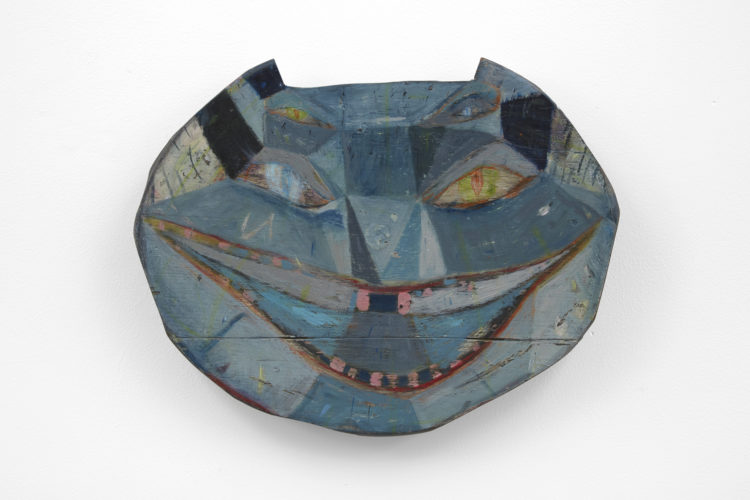
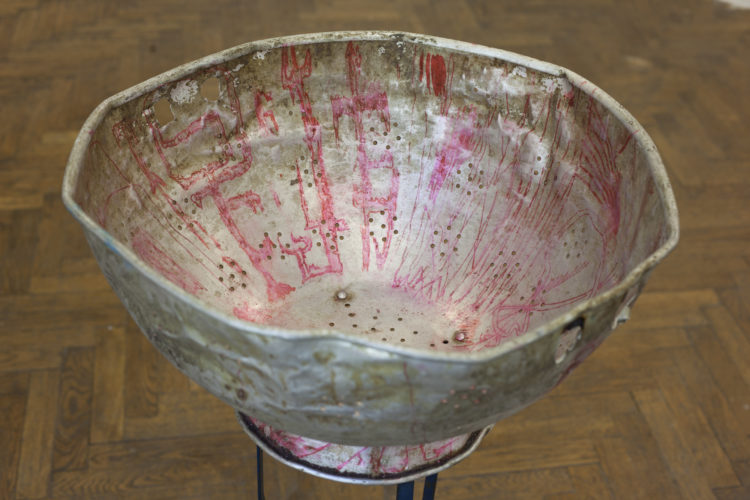
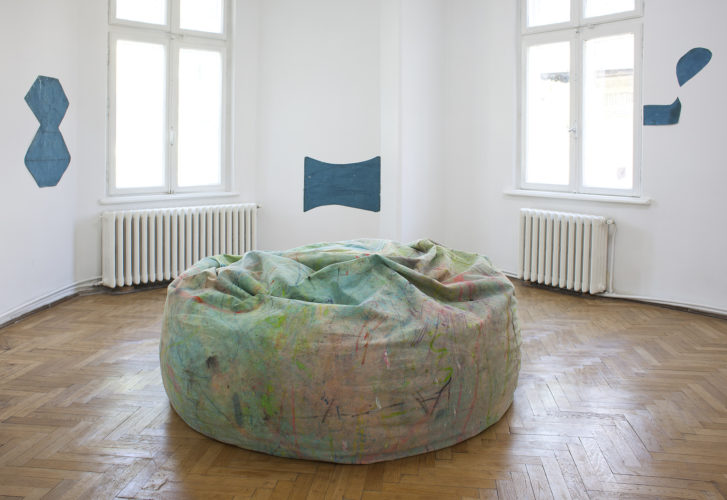
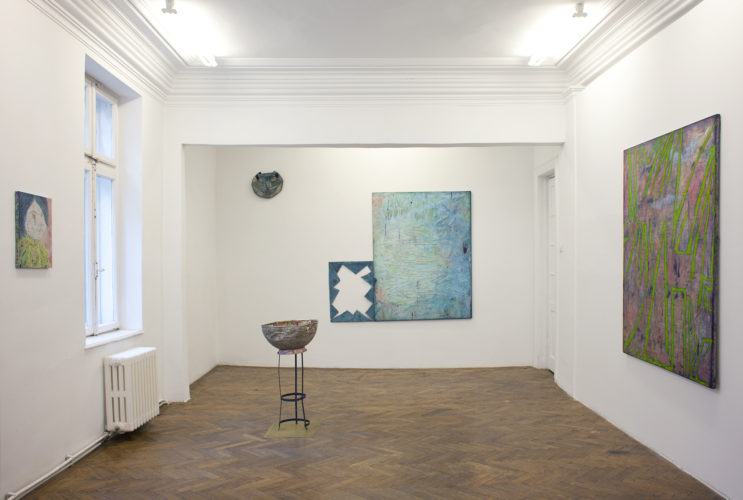
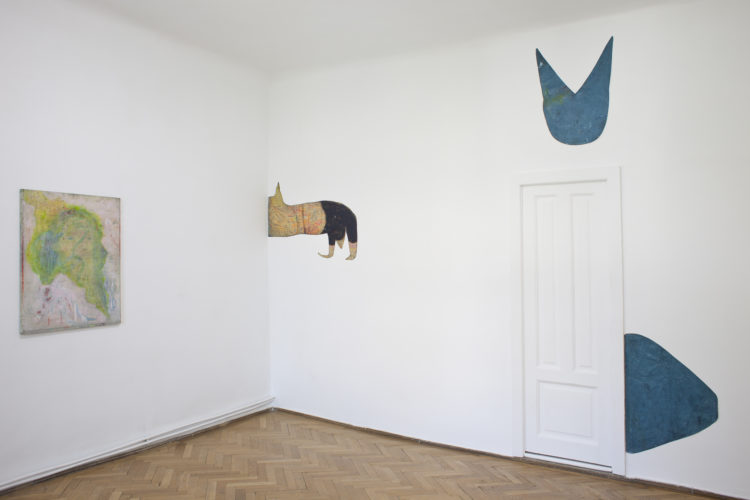
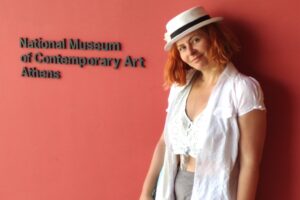
Comments are closed here.